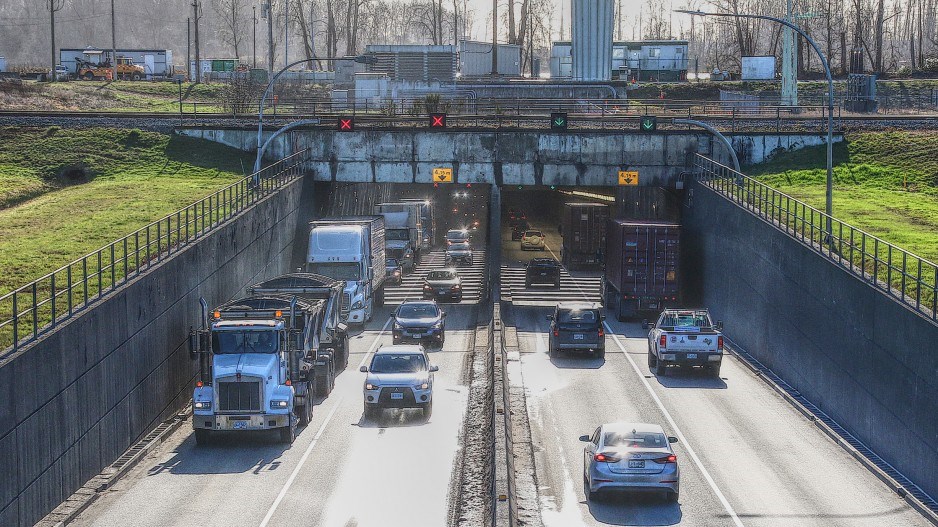Getting stuck in traffic is a common headache and for some a pet peeve, but is it enough to influence where someone chooses to buy a home?
The relationship that commuting has with home buying touches on several different topics that relate to housing, said Michael Geller, a real estate consultant and retired architect.
“I do believe that a lot of people don't always make the correlation between housing and transportation costs that they should,” he said.
Preferences on how someone gets to work and the time it takes to get there can influence the city that a potential home buyer looks in, and trends in home pricing. As achieving home ownership becomes increasingly difficult for those in Metro 91原创, more attention is being paid to the factors that might influence affordability, according to those who spoke to Glacier Media.
When it comes to traffic volume, 44 per cent of those who participated in a Leger survey commissioned by Re/Max said this is one of their biggest pain points.
When individuals look at housing options and factor in commuting needs, they do a “psychological return on investment” (ROI), said Elton Ash, executive vice-president of Re/Max Canada.
“Is the home value impacted by the commute? Are the values low enough in suburbia to, in other words, give you a kind of psychological ROI?” he said. “We're seeing this assessment of home values compared to time spent to get to work.”
However, during COVID-19 many homebuyers chose to move out of big cities and locate themselves in suburban or rural areas, said Geller. At this time, there were no offices or workplaces to commute to.
The result since then is rising home prices in cities such as Langley, Abbotsford and Chilliwack, according to Geller.
In Abbotsford, the single-family home benchmark price increased by 50.5 per cent, from $827,300 to $1,245,400, between June 2020 and June 2023, according to data from the Fraser Valley Real Estate Board.
In Langley township and city, this increase in price is 45.1 per cent from $1,110,400 to $1,611,500 in the last three years.
When asked how home seekers grapple with a psychological ROI that involves increasing traffic in these cities, longer commute times and rising prices, Ash said “that's the cold reality that [buyers] are facing now.”
Attitudes towards in-person versus remote work shifted during the pandemic and are being monitored by Metro 91原创, said James Stiver, division manager of regional land use policy with Metro 91原创 in a statement to Glacier Media.
“It is still too early to determine what elements of the changes, and to what degree, will be permanent or what new trends will be established,” he said, adding that there are studies on these workplace shifts with mixed results on whether employees and employers have a preference.
“The shift is not clear enough nor long-lasting enough to trigger a fundamental shift to the well-established long-term local and regional planning goals and strategies of this region.”
91原创's average commute time is 27.3 minutes, according to Statistics Canada data published in June.
Both Ash and Geller said that more research needs to be done to understand the impact commuting preferences have on housing distribution in the region, as well as other factors.
“Transportation costs make up a significant portion of household budgets, which are only secondary to, but in some cases more than the cost of housing. Metro 91原创 is currently working on an update to the Housing and Transportation Cost Burden Study that was completed in 2015,” said Stiver.
The study referenced shows that residents of periphery cities, where housing costs are more affordable, pay higher transportation costs and have to navigate longer commutes. The update will include details on these costs.
Ash noted that many of those who are currently in the housing markets are millennials who have different attitudes towards commuting when compared to other age groups.
“The real understanding with commute time is that it is influencing buyer demand and that the millennials, who are now the biggest demographic in the whole buying process, really have a different point of view,” he said, adding that there is more emphasis placed on climate impact and public transit.
Geller highlighted that the intersection of real estate and commuting also brings up issues with car-share distribution among regional municipalities.
“Although it operates quite effectively, in some communities it isn't as widespread as many people assume,” he said. “We're going to need to see carshare expand into some of these more suburban and extra suburban locations. Because when you look at the cost of owning a car, it's not insignificant.”



